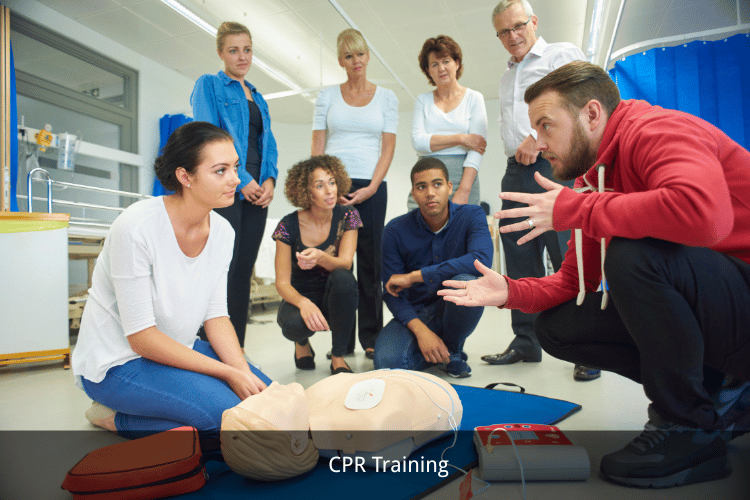
CPR training is a vital skill that empowers individuals to save lives in emergencies, such as cardiac arrest. But how long does a CPR class take? This article examines the duration of various CPR courses, including basic and advanced certifications. It highlights the factors that influence training time, enabling you to select the most suitable program for your needs.
Introduction to CPR Training
What is CPR and Why Is It Essential?
CPR, or cardiopulmonary resuscitation, is a critical life-saving technique used to restore blood circulation and breathing in individuals experiencing cardiac arrest or respiratory failure. It combines chest compressions and rescue breaths to maintain oxygen flow to vital organs, such as the brain and heart, when the body’s natural functions have stopped. This technique is especially essential in emergencies like heart attacks, drowning, or choking, where immediate action can prevent brain damage or death. Without oxygen, brain cells begin to die within minutes, making CPR a crucial intervention to buy time until professional medical help arrives. By performing CPR promptly, you can double or even triple the chances of survival for someone in cardiac arrest.The Importance of CPR Certification for Emergencies
Obtaining CPR certification equips you with the knowledge and confidence to act effectively during life-threatening situations. Certification programs provide hands-on training, ensuring you learn proper techniques for chest compressions, rescue breaths, and using an automated external defibrillator (AED). Certified individuals are better prepared to recognize emergencies, assess the victim’s condition, and perform CPR correctly. This reduces the risk of errors, such as improper compression depth or incorrect rescue breath delivery, which can compromise the victim’s chances of recovery. CPR certification is not just for healthcare professionals—it’s valuable for parents, teachers, coaches, and anyone who may encounter emergencies in daily life. Many workplaces and organizations also require certification to ensure a safer environment for employees and customers. By becoming certified, you not only gain a life-saving skill but also contribute to creating a community where more people are prepared to respond in emergencies. This widespread preparedness can significantly improve survival rates in critical situations.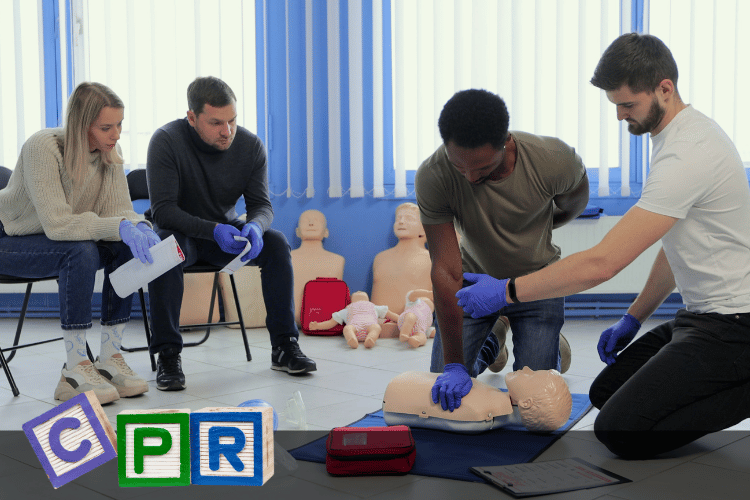
How Long Does CPR Training Take?
Standard Training Durations for Different CPR Courses
The time needed for CPR training varies based on the course's depth and focus. A standard CPR/AED course, ideal for office workers, community volunteers, or new parents, typically lasts 2 to 4 hours. This session covers all the essentials, including chest compressions, rescue breaths, and how to operate an automated external defibrillator (AED). For healthcare professionals like nurses or paramedics, more advanced certifications are necessary. Basic Life Support (BLS) training takes about 4 to 5 hours and delves into team-based resuscitation. Advanced Cardiovascular Life Support (ACLS) is even more intensive, requiring 6 to 8 hours for initial certification, as it covers complex topics like pharmacology and arrhythmia interpretation. If your focus is on children, a Pediatric CPR course is your best choice. These classes, designed for parents, teachers, and daycare staff, usually run for 2 to 3 hours. They specifically address the techniques required for infants and young children, which differ from adult CPR.In-Person vs. Online CPR Classes: Time Commitments and Flexibility
The format you choose for your CPR class directly impacts your time commitment and schedule flexibility. Each option offers distinct advantages. In-Person Classes: Traditional in-person training provides a structured learning environment, usually completed in a single session of 2 to 4 hours for basic courses. These classes are invaluable for hands-on practice, allowing you to work with mannequins and get immediate, personalized feedback from an instructor. While less flexible due to fixed schedules, the direct interaction ensures you master the physical techniques correctly. Online and Hybrid Classes: Online CPR courses offer maximum flexibility, letting you progress at your own pace. The self-guided learning portion often takes 1 to 2 hours to complete. For a fully recognized certification, you'll likely need a hybrid course. This involves completing the online theory and then attending a brief, 30- to 60-minute in-person skills session to demonstrate your practical abilities with an instructor.Factors That Influence the Length of CPR Training
Several variables can alter the duration of your CPR class, so it's helpful to know what to expect.- Course Type: The most significant factor is the course itself. A basic CPR/AED class is much shorter than an advanced ACLS certification, which covers a wider range of medical interventions and requires more in-depth instruction.
- Instructor Pace: An instructor's teaching style can influence the class length. Some may move quickly through the material, while others might spend more time on demonstrations, answering questions, or sharing real-world examples, which can extend the session.
- Class Size: The number of participants matters. A smaller class of 5-6 people allows for more individual practice time and one-on-one feedback, often leading to a shorter session. A larger class of 15-20 participants may take longer, as the instructor needs to ensure everyone has a chance to practice and ask questions.
- Participant Experience: Your previous knowledge plays a role. A class full of beginners might need more time to grasp the fundamentals and build confidence. In contrast, a renewal course with experienced participants often moves faster, focusing on updates and skill refreshers rather than foundational learning.
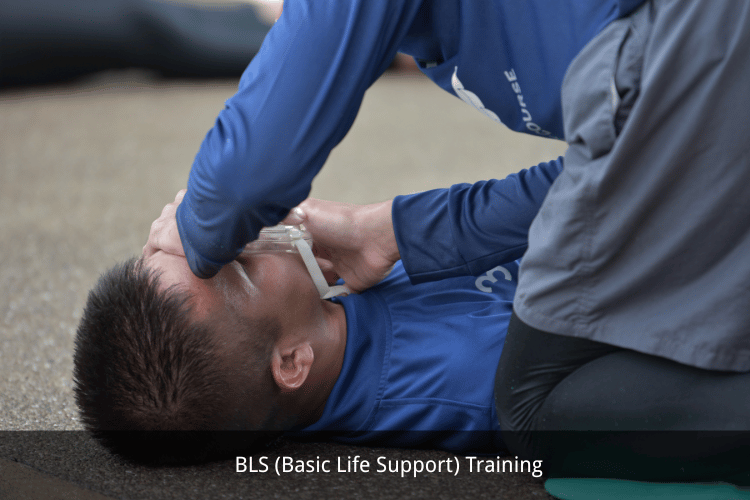
Types of CPR Classes and Their Time Requirements
BLS (Basic Life Support) Training: Who It’s For and How Long It Takes
Basic Life Support (BLS) training is designed for healthcare professionals, first responders, and individuals who may need to perform CPR in a clinical or high-stakes environment. This course focuses on essential life-saving techniques, including high-quality chest compressions, rescue breaths, and the use of an automated external defibrillator (AED). Duration: BLS training typically takes 4 to 5 hours to complete. The course includes both theoretical instruction and hands-on practice, ensuring participants are well-prepared to handle emergencies like cardiac arrest or respiratory failure. Who It’s For:- Doctors, nurses, and paramedics
- Firefighters and police officers
- Lifeguards and athletic trainers
- Medical and nursing students
ACLS (Advanced Cardiovascular Life Support) Training: Duration and Advanced Skills Covered
Advanced Cardiovascular Life Support (ACLS) training builds on the skills learned in BLS and is intended for experienced healthcare providers who manage critical emergencies. This course covers advanced techniques such as airway management, recognizing and treating arrhythmias, and administering emergency medications. Duration: ACLS training usually takes 6 to 8 hours for initial certification. For those renewing their certification, the course may be shorter, lasting around 4 to 6 hours. Advanced Skills Covered:- Team-based resuscitation strategies
- Advanced airway techniques, including intubation
- ECG interpretation and arrhythmia management
- Pharmacology for cardiac emergencies
Pediatric CPR and First Aid Training: Time Needed for Child-Focused CPR Skills
Pediatric CPR and first aid training focuses on life-saving techniques for infants and children, making it an essential course for parents, caregivers, and educators. The course covers child-specific CPR techniques, choking relief, and basic first aid for common injuries and illnesses. Duration: Pediatric CPR training typically takes 2 to 3 hours to complete. Some courses may combine pediatric CPR with first aid, extending the total time to 4 to 5 hours. Who It’s For:- Parents and guardians
- Babysitters and nannies
- Teachers and daycare staff
- Coaches and youth group leaders

What to Expect During a CPR Class
Overview of Hands-On Practice and Theoretical Learning
CPR classes combine theoretical instruction with hands-on practice to ensure participants gain both the knowledge and skills needed to respond effectively in emergencies. Theoretical learning typically involves understanding the science behind CPR, such as how chest compressions and rescue breaths maintain oxygen flow and circulation. Instructors use videos, presentations, and discussions to explain key concepts, including recognizing cardiac arrest and the importance of early intervention. Hands-on practice is a critical component of CPR training. Participants work with mannequins to simulate real-life scenarios, practicing techniques like chest compressions, rescue breaths, and using an automated external defibrillator (AED). Instructors provide real-time feedback to help refine your technique and ensure you’re performing each step correctly. This practical experience builds confidence and prepares you to act quickly in high-pressure situations.Key Skills Covered: Chest Compressions, Rescue Breaths, and AED Use
During a CPR class, you’ll learn and practice the following essential skills:- Chest Compressions:
- Learn how to position your hands on the chest, apply the correct amount of pressure, and maintain a steady rhythm of 100–120 compressions per minute.
- Practice compressing to a depth of at least 2 inches for adults while allowing full chest recoil between compressions.
- Rescue Breaths:
- Master the head-tilt, chin-lift technique to open the airway.
- Practice delivering two rescue breaths after every 30 compressions, ensuring the chest rises with each breath.
- AED Use:
- Understand how to operate an automated external defibrillator (AED) safely and effectively.
- Practice attaching AED pads, following voice prompts, and delivering a shock if advised by the device.
Certification Process and What Happens After Training
At the end of the class, participants typically take a short written test and demonstrate their skills in a practical assessment. The certification process ensures you’ve mastered the techniques and can perform CPR effectively in real-life emergencies. Once you pass, you’ll receive a CPR certification card, which is valid for two years in most cases. This card serves as proof of your training and may be required for certain jobs or volunteer roles. After training, it’s important to stay prepared by reviewing your skills regularly. Some organizations offer refresher courses or online resources to help you maintain your confidence and readiness. By staying up-to-date, you’ll be ready to act quickly and effectively when it matters most.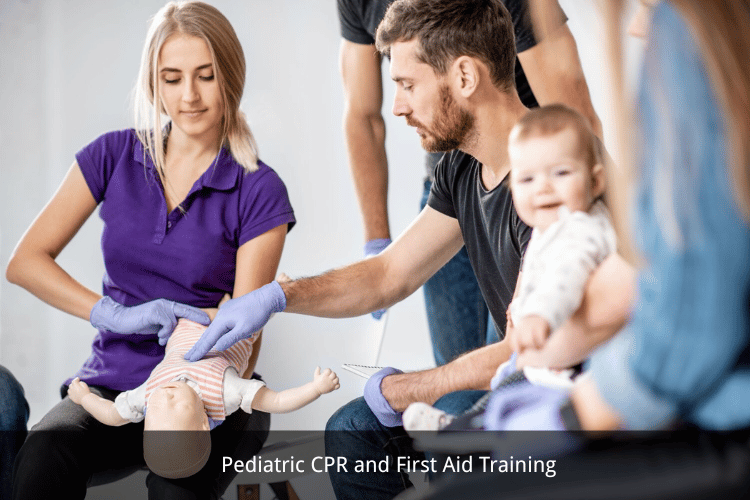
FAQs About CPR Classes
How Long Is CPR Certification Valid?
CPR certification is typically valid for two years from the date of completion. After this period, you’ll need to renew your certification to ensure your skills and knowledge remain up-to-date. Renewal courses are often shorter than initial training and focus on refreshing key techniques, such as chest compressions, rescue breaths, and AED use. Some organizations, like the American Heart Association (AHA) or the Red Cross, may send reminders when your certification is about to expire, making it easier to stay current. Keeping your certification valid is especially important for professionals in healthcare, education, or other roles where CPR skills are required.Can I Complete CPR Training in One Day?
Yes, most CPR training courses can be completed in a single day. Basic CPR certification classes, which cover essential skills like chest compressions, rescue breaths, and AED operation, usually take 2 to 4 hours. These courses are designed to be concise while still providing hands-on practice and theoretical knowledge. For more advanced certifications, such as Basic Life Support (BLS) or Advanced Cardiovascular Life Support (ACLS), the training may take 6 to 8 hours and could extend over multiple days, depending on the course structure. However, many organizations offer flexible scheduling options, including accelerated one-day programs for those with time constraints.What Are the Differences in Class Length for Beginners vs. Professionals?
The length of a CPR class varies based on the participant’s experience level and the course type:- Beginners:
- For individuals with no prior CPR experience, basic courses like CPR/AED or Pediatric CPR typically last 2 to 4 hours. These classes focus on foundational skills and provide ample time for practice and instructor feedback.
- Professionals:
- Healthcare providers and first responders often require advanced certifications, such as BLS or ACLS. These courses are more comprehensive and can take 4 to 8 hours or longer, depending on the curriculum. Professionals may also need to demonstrate proficiency in advanced techniques, such as airway management and team-based resuscitation.
- Renewal Courses:
- For both beginners and professionals, renewal courses are shorter, often lasting 1 to 3 hours, as they focus on refreshing existing skills rather than teaching new ones.
Why Enroll in a CPR Class?
Life-Saving Benefits of Learning CPR
Learning CPR equips you with the ability to save lives in critical situations. Cardiac arrest can happen anywhere—at home, work, or in public—and immediate CPR can double or even triple the chances of survival. By knowing how to perform chest compressions and rescue breaths, you can keep oxygen flowing to the brain and heart until professional help arrives. CPR is not just for healthcare professionals. Parents, teachers, coaches, and even bystanders can make a life-saving difference with proper training. Whether it’s helping a loved one or a stranger, the skills you gain in a CPR class empower you to act confidently and effectively when every second counts.How CPR Training Prepares You for Real-World Emergencies
CPR training goes beyond theory by providing hands-on practice in realistic scenarios. You’ll learn how to assess a victim’s condition, perform high-quality chest compressions, and use an automated external defibrillator (AED). Instructors guide you through common emergencies, such as cardiac arrest, choking, or drowning, so you’re prepared to respond under pressure. The training also emphasizes teamwork and communication, which are crucial in emergencies involving multiple responders. By practicing these skills in a controlled environment, you’ll build the confidence to take charge and make quick, informed decisions in real-world situations.Encouragement to Take the First Step Toward Certification
Enrolling in a CPR class is a simple yet powerful step toward becoming a life-saver. The training is accessible to everyone, with flexible options like in-person, online, or hybrid courses to fit your schedule. Most classes take just a few hours, but the skills you gain can last a lifetime. Don’t wait for an emergency to realize the importance of CPR. By getting certified, you’re not only preparing to protect your loved ones but also contributing to a safer, more prepared community. Take the first step today and join a CPR class—you never know whose life you might save.Resources for Finding CPR Training
Tips for Locating Certified CPR Courses Near You or Online
Finding a certified CPR course is easier than ever, thanks to a variety of in-person and online options. Start by checking well-known organizations like the American Heart Association (AHA) or the Red Cross, which offer accredited training programs nationwide. Their websites often include a course locator tool where you can search by zip code or city to find classes near you. Local hospitals, community centers, and fire departments are also excellent resources for in-person CPR training. Many of these organizations host regular classes, often at affordable rates or even for free. If you’re looking for flexibility, online CPR courses are a great alternative. Platforms like the AHA and Red Cross provide hybrid options, allowing you to complete the theoretical portion online and attend a short in-person session for hands-on practice. For workplace training, ask your employer if they offer on-site CPR certification. Many companies partner with training providers to ensure their staff is prepared for emergencies.How to Choose the Right Class for Your Needs
Selecting the right CPR class depends on your goals and the situations you’re most likely to encounter. Here’s how to narrow down your options:- Consider Your Role:
- If you’re a healthcare professional, look for advanced courses like Basic Life Support (BLS) or Advanced Cardiovascular Life Support (ACLS), which cover specialized techniques and team-based resuscitation.
- For parents, teachers, or caregivers, Pediatric CPR and First Aid classes focus on child-specific emergencies, making them ideal for those working with kids.
- Check Certification Requirements:
- Ensure the course is accredited by a recognized organization like the AHA or Red Cross. Certification from these providers is widely accepted and often required for jobs in healthcare, education, or childcare.
- Evaluate Class Format:
- Decide whether you prefer in-person training for hands-on practice or the convenience of online learning. Hybrid courses offer the best of both worlds, combining online flexibility with practical experience.
- Look at Class Length and Schedule:
- Choose a class that fits your availability. Basic CPR courses typically take 2–4 hours, while advanced certifications may require a full day or multiple sessions.
CPR Training FAQs
Q: What to Expect in a CPR Course
A: In a CPR course, participants can expect a combination of theoretical instruction and hands-on practice. The course typically begins with an overview of the importance of CPR and its role in saving lives. Participants will learn how to assess an unresponsive individual, perform chest compressions, deliver rescue breaths, and use an automated external defibrillator (AED). Hands-on practice with mannequins is a key component, allowing learners to refine their techniques under the guidance of certified instructors. Many courses also include simulated emergency scenarios to help participants apply their skills in real-life situations. By the end of the course, participants will have the confidence and knowledge to respond effectively during cardiac emergencies.
Q: Certification Validity and Renewal
A: CPR certifications are generally valid for two years from the date of completion. After this period, individuals are required to renew their certification to ensure their skills remain current and aligned with the latest guidelines. Renewal courses are often shorter than initial training and focus on refreshing key techniques, such as high-quality chest compressions, rescue breaths, and AED use. It’s important to check with your certifying organization, such as the American Heart Association (AHA) or the American Red Cross, for specific renewal requirements and timelines.
Q: How long does a CPR class take?
A: The length of a CPR class can vary depending on the type of training. Basic CPR courses typically take 2 to 4 hours, while advanced courses, such as Pediatric Advanced Life Support (PALS) or Advanced Cardiovascular Life Support (ACLS), can last up to 16 hours. Renewal courses are generally shorter, often taking 1 to 2 hours.
Q: What are the different types of CPR training available?
A: There are several types of CPR training available, tailored to different audiences and needs:
- Basic CPR Training: Designed for laypersons and non-medical individuals, focusing on adult, child, and infant CPR, as well as AED use.
- Basic Life Support (BLS): Aimed at healthcare professionals, covering team-based resuscitation, advanced airway management, and high-quality CPR techniques.
- Advanced Cardiovascular Life Support (ACLS): For medical professionals managing cardiac and respiratory emergencies, including arrhythmias and advanced airway techniques.
- Pediatric CPR and First Aid: Focused on emergencies involving infants and children, including choking, CPR, and injury management.
Q: Can I take CPR classes online?
A: Yes, many organizations offer online CPR courses that allow you to learn at your own pace. These courses typically include video demonstrations, interactive modules, and quizzes to reinforce learning. However, most online CPR programs require an in-person skills session to ensure participants can perform CPR and use an AED correctly. This hands-on component is essential for certification and ensures that learners are prepared to respond effectively in real-life emergencies.
Q: What is the importance of CPR training for healthcare employees?
A: CPR training is vital for healthcare employees as it equips them with the skills to respond quickly and effectively during cardiac emergencies. In a healthcare setting, timely and high-quality CPR can significantly improve a patient’s chance of survival. It also ensures that healthcare teams are prepared to work collaboratively during resuscitation efforts, enhancing overall patient outcomes. CPR training is often a mandatory requirement for healthcare professionals, ensuring they are ready to handle emergencies in both clinical and community environments.
Q: How often do I need to renew my CPR certification?
A: Most CPR certifications need to be renewed every two years. Regular renewal ensures that your skills remain sharp and up-to-date with the latest guidelines. Many organizations, such as the AHA, offer streamlined renewal courses that focus on refreshing key techniques and addressing any updates to CPR protocols.
Q: What is the difference between CPR and first aid training?
A: CPR (Cardiopulmonary Resuscitation) focuses specifically on lifesaving techniques used during cardiac arrest, such as chest compressions, rescue breaths, and AED use. First aid training, on the other hand, covers a broader range of emergency response skills, including treating wounds, burns, fractures, and managing medical conditions like allergic reactions or seizures. While CPR is a component of first aid training, the two courses serve different purposes and are often taken together for comprehensive emergency preparedness.
Q: What is an AED and how is it used in CPR?
A: An Automated External Defibrillator (AED) is a portable device that analyzes the heart’s rhythm and delivers an electric shock if needed to restore a normal heartbeat. During CPR, the AED is used to assess the patient’s condition and provide defibrillation when necessary. The device includes voice prompts and visual instructions, making it easy to use even for individuals with minimal training. AEDs are a critical part of CPR training, as their timely use can significantly increase the chances of survival during sudden cardiac arrest.
Q: What are the guidelines for CPR and ECC?
A: The American Heart Association (AHA) guidelines for CPR and Emergency Cardiovascular Care (ECC) provide evidence-based recommendations for performing CPR effectively. These guidelines emphasize the importance of high-quality chest compressions, with a compression depth of at least 2 inches for adults and a rate of 100-120 compressions per minute. Proper rescue breaths, minimizing interruptions during compressions, and the use of AEDs are also key components. The guidelines are updated periodically to reflect the latest research and advancements in resuscitation science, ensuring that CPR techniques remain effective and lifesaving.
Conclusion
Whether you're a healthcare professional or a concerned citizen, investing a few hours in CPR training can make a life-saving difference. With courses ranging from 2 to 6 hours, depending on the level and format, CPR certification equips you with the skills and confidence to act swiftly in emergencies. Choose a program that fits your schedule and start making a difference today.


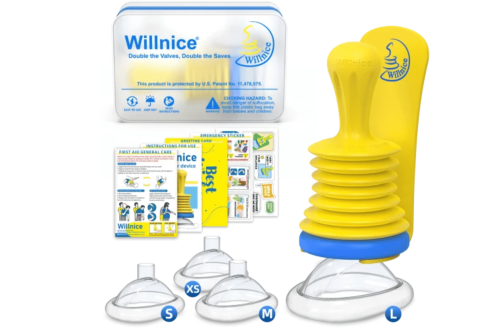


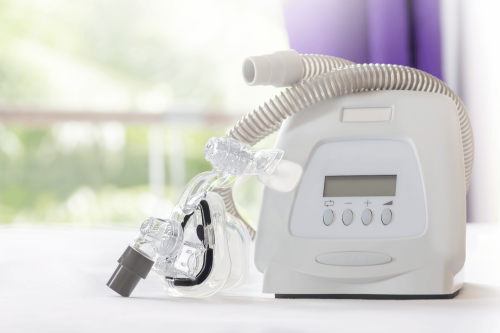


 Login with Google
Login with Google Login with Facebook
Login with Facebook